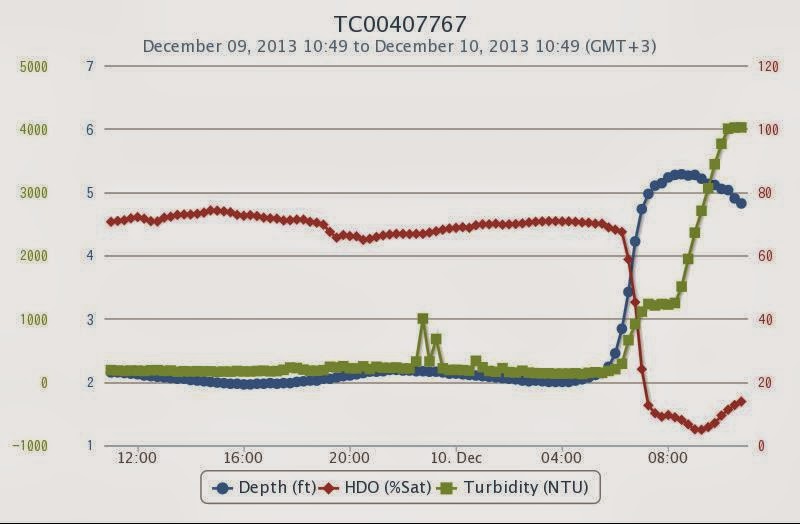Over the last few years working in the Mara, Chris and I have noticed a very interesting pattern. After the river has been low for a while, the next big rainstorm will usually bring a flushing event that will result in a crash in dissolved oxygen and sometimes an associated fish kill. In general, we believe these events are due to the flushing of large amounts of carbon, and associated microbial activity, through the system. However, we are still testing several hypotheses about where exactly all this carbon comes from. It could be from the scouring of hippo pools along the main channel; it could be from the draining of several low-flow tributaries into the Mara; or it could be from some other source we haven’t found yet. To test these hypotheses, it is important to capture water samples during both the rising and falling portion of the flush. Last year, we purchased some automated water samplers that can be set in advance and triggered to start sampling when the river rises to a certain level, in order to better study these events.
As you may have seen from the falling depth gauge on the top right corner of our blog (or under the Mara Live link), the river has been steadily falling over the last month, and getting to very low levels. Last week we spoke with Brian Heath, Director of the Mara Conservancy, and he told us that big rains were going to start in the next week. Brian has lived in the Mara for 11 years and knows it incredibly well– when he says something is going to happen, you should listen! So Chris and I headed down to the river last week and set up our automated sampling machine, gambling that the coming rains would bring about a large flushing event
 |
| Setting up our automated sampler in anticipation of the rains |
Yesterday, we awoke in Narok to a text message sent from our real-time water quality meter that the river had risen 3 feet and the dissolved oxygen (DO) had crashed to below 20%! Hopeful that the automated sampler had worked as planned, we hopped in the car and headed back to the Mara, arriving just as the levels were beginning to return to normal.
 |
| Graph from the Mara River showing depth, DO and turbidity in response to a flushing event |
Excitingly, we arrived just one hour after the sampling program had been completed, and everything worked! The sampler had triggered after the river rose about 6 inches, and had taken samples all through the rising and falling limb of the flood! Now we can analyze these samples to determine where the water came from that caused the event, how much hippo feces it was carrying, and how much microbial activity was occurring in the river. This translates into us having a lot of filtering to do!